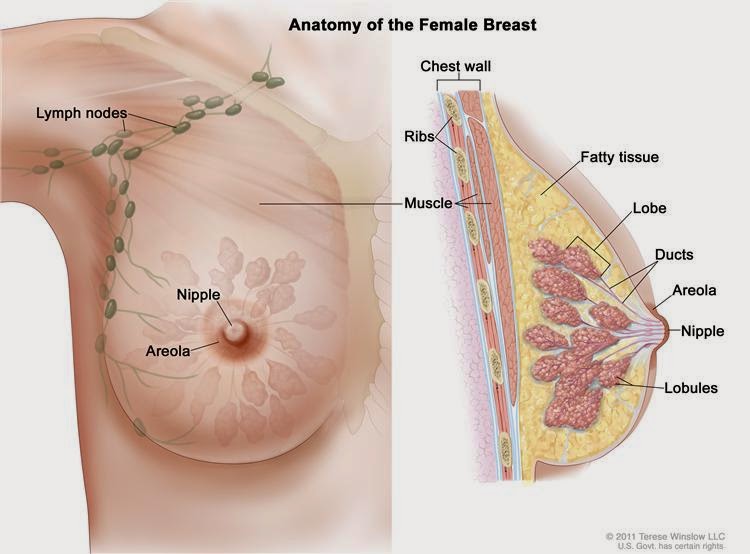 |
| Her2 Breast Cancer |
What Is a Diagnostic Mammogram?
Diagnostic mammograms differ from screening mammograms in that the examination focuses specifically on an area of breast tissue that appeared abnormal in a screening mammogram. Diagnostic mammograms are also done for women who haven't had a screening mammogram but may be showing signs or symptoms of something abnormal in the breasts.
Depending on the potential abnormality, different studies may be done. In some women, only additional mammographic images are done. In other women, additional mammographic images, an ultrasound, or a biopsy is needed.
How Does an Abnormality Appear on a Mammogram?
An abnormality on a mammogram may be called a nodule, mass, lump, density, or distortion.
- A mass (lump) with a smooth, well-defined border is often benign. An ultrasound may be needed to characterize the inside of a mass. If the mass contains fluid, it is called a cyst.
- A mass (lump) that has an irregular border or a star-burst appearance (spiculated) raises more concern about. A biopsy is usually recommended.
- Calcifications (deposits of calcium) are another type of abnormality that appears as either macrocalcifications (larger deposits) or microcalcifications (smaller deposits). They can be classified as benign, suspicious, or indeterminate. Both of these types of calicifications are often benign, however the appearance of microcalcifications may require additional studies (magnification views) and a biopsy to rule out an associated cancer.
How Effective Is Mammography in Detecting Breast Cancer?
Mammography helps diagnose about 75% to 85% of breast cancers. Mammograms have improved the ability to detect breast abnormalities before they are large enough to be felt. In addition, detection rates improve as the patient ages.
Detection rates may also improve with more widespread use of three-dimensional mammography. Initial research showed that 3D mammography, used along with standard digital mammograms, improved breast cancer detection rates and decreased the number of women who had to return for more tests because of a suspicious mammogram finding.
Source: All About Mammogram




No comments:
Post a Comment